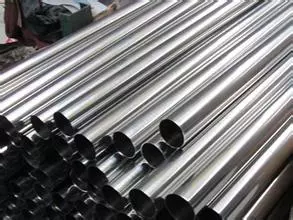Corrosive forms of sanitary stainless steel tubes mainly includes crevice corrosion, pitting corrosion, balanced corrosion, intergranular corrosion and stress corrosion, etc.
Crevice Corrosion
Crevice corrosion refers to local corrosion caused by electrochemical imbalance of the medium in the seams of sanitary
stainless steel tube components and punctate or ulcer form corrosion pits arise.
Pitting Corrosion
Pitting corrosion refers to the fact that the surface passivation film of sanitary stainless steel tubes is destroyed by corrosion, producing local or slight corrosion, and the size of erosion point is generally less than 1 mm, the depth is larger than the aperture of surface corrosion. The process of pitting corrosion process is slow, first corrosion pits form, and then continuing to internal corrosion, even perforation.
Balanced Corrosion
Balanced corrosion refers to the phenomenon of all surface corrosion after sanitary stainless steel tubes contacting corrosive media. Balanced corrosion makes the section of sanitary stainless steel tube shrink, which will make corrosive loaded parts bear gradually increasing true stress, until exceed the burst strength and lead to cracking.
Intergranular Corrosion
Unlike other corrosion, macroscopically intergranular corrosion is not necessarily local. It is a kind of corrosion that destroys intergranular combination by extending deeply into interior through crystal grains of sanitary stainless steel tube. Besides, after intergranular corrosion, the surface of sanitary stainless steel tubes still retains its metallic luster, visually no signs of corrosion, but the binding force between crystal grains has been severely damaged and cannot withstand tapping, leading to sanitary stainless steel tube easy to crack, the seriously corrosive parts even become powder, whose harm is self-evident.
Stress Corrosion
Stress corrosion refers to the fact that sanitary stainless steel tubes generate crack under the effect of stress in a corrosive medium. With time goes by, crack expand inward through the sanitary stainless steel tube grain or along the intergranular until the tubes split.


